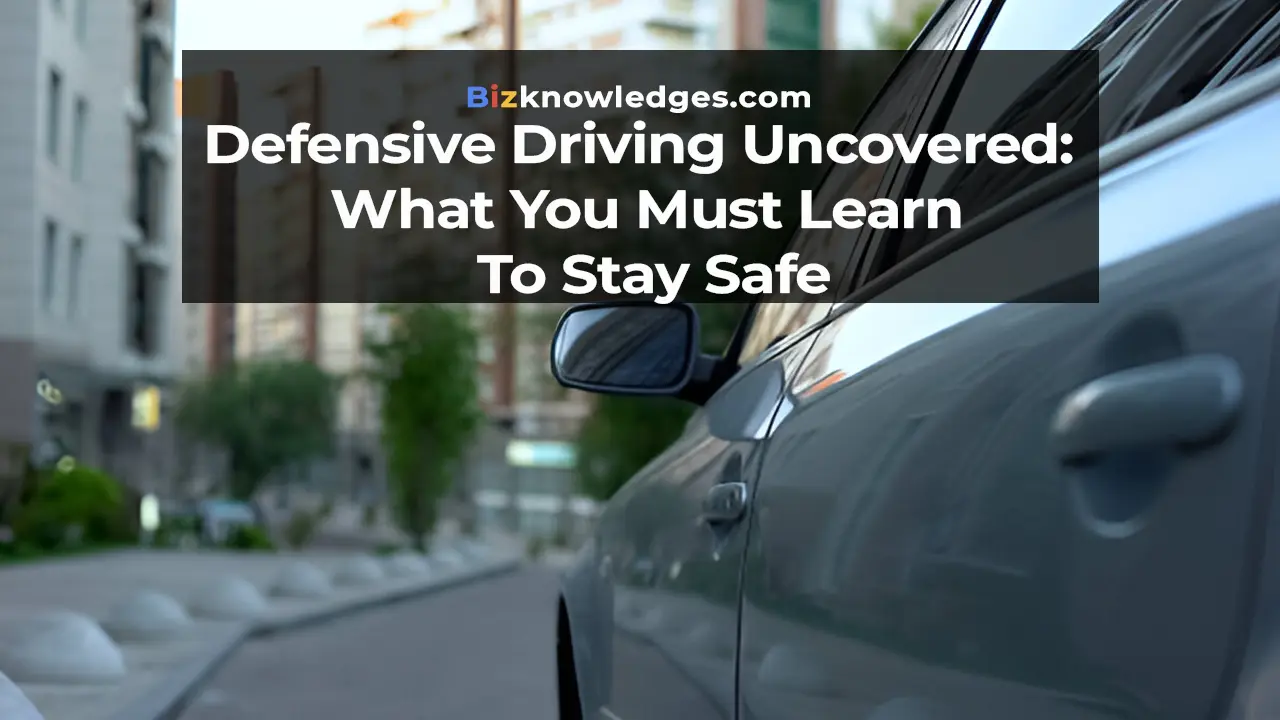Defensive Driving Uncovered: What You Must Learn to Stay Safe

Every time you get behind the wheel, you’re stepping into a complex dance of speed, direction, and decision-making. With more vehicles on the road than ever before, driving has become an essential skill and a significant responsibility. The concept of defensive driving has emerged as a crucial practice, designed to protect drivers, passengers, and everyone else on the road from accidents and mishaps. But what exactly is defensive driving, and how can it transform your daily commute into a safer experience for all?
Key Principles and Techniques of Defensive Driving
To become a defensive driver, it’s essential to grasp the fundamental principles and techniques that guide this approach. These skills enable drivers to stay vigilant, anticipate potential risks, and make informed decisions in real time.
Maintaining Safe Following Distances
One of the cornerstones of defensive driving is maintaining a safe following distance. This means keeping a sufficient gap between your vehicle and the one in front of you to give yourself ample time to react in case of sudden stops or emergencies. The “three-second rule” is a popular guideline, where you should pick a fixed point on the road and ensure it takes at least three seconds for your vehicle to reach that point after the car ahead has passed it.
This technique is crucial in preventing rear-end collisions, one of the most common types of accidents. By allowing yourself extra space, you create a buffer zone that reduces the chances of accidents caused by abrupt braking. Remember, safe following distances should be increased in adverse weather conditions, such as rain or snow, where road surfaces may be slippery.
Anticipating and Avoiding Hazards
Defensive drivers are masters of anticipation. They constantly scan their surroundings, including checking blind spots and mirrors regularly, to identify potential hazards before they become real threats. This proactive approach means you’re less likely to be caught off guard by unexpected situations.
For instance, if you notice a driver swerving in their lane or someone texting while driving, maintain a safe distance and be ready to take evasive action if necessary. Keep an eye on pedestrians and cyclists, especially at intersections or crosswalks. By staying alert and predicting the actions of others, you significantly reduce your risk of being involved in an accident.
Driving Proactively in All Conditions
Defensive driving isn’t limited to perfect weather and ideal road conditions. It’s about adapting your driving style to suit the environment around you. Whether you’re driving in heavy traffic, on a rural road, or during a downpour, your approach will vary.
In city driving, where traffic can be unpredictable and congested, defensive drivers maintain a calm demeanor, avoid aggressive lane changes, and stay aware of pedestrians. On highways, they adapt their speed to the flow of traffic, use turn signals early, and keep a safe distance from large vehicles and trucks. In rural areas, they watch out for animals that may cross the road unexpectedly.
Regardless of the setting, driving proactively means adjusting your driving to match the conditions. By doing so, you’re not only safeguarding yourself but also fostering a safer driving environment for everyone sharing the road.
The Legal Benefits of Defensive Driving
While the primary focus of defensive driving is safety, it also offers several legal and financial advantages. By adhering to defensive driving principles, you reduce your risk of accidents and traffic violations, potentially saving you money and legal trouble.
Reduced Risk of Accidents and Traffic Violations
Defensive drivers are less likely to be involved in accidents because they’re attentive, cautious, and prepared for unexpected events. This reduced risk translates to fewer traffic violations, such as speeding or running red lights. When you’re focused on maintaining a safe distance, anticipating hazards, and adhering to traffic rules, you’re less likely to find yourself on the wrong side of the law.
Lower Insurance Premiums and Points on Your License
Insurance companies recognize the value of defensive driving in minimizing accidents and claims. Many insurers offer discounts to drivers who have completed defensive driving courses, as these courses demonstrate a commitment to safe driving practices. Additionally, some states allow drivers to remove points from their license by completing a defensive driving course, helping you maintain a clean driving record and potentially lowering insurance premiums.
Gaining the Advantage When Involved in an Accident
If you do find yourself in an accident, being a defensive driver can work in your favor. Your commitment to safety and adherence to traffic rules can serve as evidence that you took every precaution to prevent the incident. This can be valuable when dealing with insurance claims and legal proceedings, so it’s wise to hire a car accident lawyer like those in Salt Lake City. They can help you demonstrate your responsibility as a driver and give you an upper hand in navigating the complexities that follow.
How to Incorporate Defensive Driving into Everyday Commutes
Integrating defensive driving techniques into your daily routine doesn’t require a complete overhaul of your driving habits. Instead, it’s about making small adjustments to your mindset and approach that can have a big impact on your safety and confidence behind the wheel.

Strategies for City, Highway, and Rural Driving
City driving requires heightened awareness due to the constant presence of pedestrians, cyclists, and other vehicles. Defensive drivers stay focused, avoid distractions, and anticipate the actions of others. When navigating intersections, practice patience and yield the right-of-way when needed. Keep an eye out for pedestrians darting across the street, and always double-check for cyclists before making turns.
Highway driving demands a different set of skills, especially when dealing with high speeds and multiple lanes. Defensive drivers maintain a steady pace, use mirrors and turn signals consistently, and avoid sudden lane changes. Keep a watchful eye on merging traffic, and adjust your speed to create a safe gap between you and the car ahead. Remember, a few extra seconds could make all the difference in avoiding accidents.
In rural areas, defensive driving involves being prepared for unexpected obstacles such as farm equipment, wildlife, or narrow roads. Reduce your speed when visibility is limited, and be cautious around blind corners. Respect the road conditions, and be mindful of other drivers who may be unfamiliar with the area.
Tips for Driving in Inclement Weather
Defensive driving becomes even more critical when weather conditions are less than ideal. Rain, snow, fog, and ice can all affect road safety, making it crucial to adjust your driving style accordingly.
When driving in rain or snow, slow down and increase your following distance to account for reduced traction. Ensure your headlights are on, and avoid using cruise control, which can lead to loss of control on slippery surfaces. In foggy conditions, use your low-beam headlights for better visibility, and maintain a consistent speed to prevent sudden braking.
In all weather conditions, stay patient and avoid aggressive maneuvers. Your cautious approach not only keeps you safe but also encourages other drivers to do the same, promoting a safer environment for everyone.
The Future of Defensive Driving Technological Advancements
As technology continues to advance, so do the tools available to enhance defensive driving practices. Modern vehicles come equipped with advanced driver-assist technologies that can supplement your skills and make your driving experience safer and more convenient.

Overview of Driver-Assist Technologies
Driver-assist technologies are designed to help drivers make informed decisions and avoid accidents. Features like adaptive cruise control, lane departure warning, and automatic emergency braking provide an additional layer of safety. These technologies can detect obstacles, monitor your position within your lane, and even apply brakes when needed, reducing the risk of collisions.
When combined with defensive driving techniques, these technologies create a comprehensive safety net that enhances your ability to respond to potential hazards. However, it’s important to remember that these tools are meant to assist, not replace, your role as a responsible driver.
The Role of Autonomous Vehicles
The concept of fully autonomous vehicles is no longer confined to science fiction—it’s becoming a reality. While self-driving cars hold the promise of reducing human error and accidents, they also raise questions about the future of defensive driving.
While autonomous vehicles can make split-second decisions and react faster than humans, human drivers will still need to remain vigilant and ready to intervene when necessary. The coexistence of autonomous and human-driven vehicles on the road will require a new level of awareness and adaptability, further emphasizing the importance of defensive driving skills.
Conclusion
In today’s busy world, adopting defensive driving practices is essential for a safer driving culture. By being proactive and attentive, drivers not only protect themselves but also contribute to the safety of others. Education and awareness are key in empowering drivers to make safer choices. Encouraging discussions about defensive driving can lead to a positive shift in behavior and a reduction in accidents. Remember, defensive driving is a mindset applicable in every driving situation, turning each moment behind the wheel into an opportunity for safety.
